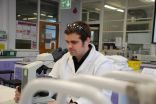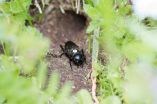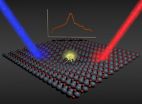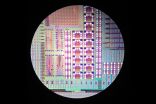(Press-News.org) April 23, 2015 - Interventional treatments--especially surgery--provide good functional outcomes and a high cure rate for patients with lower-grade arteriovenous malformations (AVMs) of the brain, reports the May issue of Neurosurgery, official journal of the Congress of Neurological Surgeons. The journal is published by Wolters Kluwer.
The findings contrast with a recent trial reporting better outcomes without surgery or other interventions for AVMs. "On the basis of these data, in appropriately selected patients, we recommend treatment for low-grade brain AVMs," concludes the study by Dr. Laligam N. Sekhar and colleagues of University of Washington, Seattle.
Good Results with Surgery for Lower-Grade Brain AVMs
The researchers evaluated their hospital's experience in treating 105 patients with AVMs from 2005 to 2012. Arteriovenous malformations are congenital defects consisting of an abnormal tangle of blood vessels. When AVMs are located in the brain, there is a risk that they may rupture and bleed, causing potentially life-threatening hemorrhagic stroke.
When AVMs are detected before rupture, options include medical (conservative) treatment, consisting of monitoring and follow-up; or various active treatments, including surgery, an interventional procedure called embolization, or a radiation procedure called radiosurgery.
Dr. Sekhar and colleagues were particularly interested in comparing their experience with the results of the 2014 ARUBA clinical trial. In that study, patients randomly assigned to medical treatment had a lower three-year risk of stroke or death, compared to those undergoing other surgery or other interventions.
The new analysis focused on 61 adult patients with brain AVMs who would have been eligible for the ARUBA study. Dr. Sekhar and colleagues categorized the results by AVM severity: low-grade, intermediate, or high-grade. About half of the ARUBA-eligible patients had low-grade (grade I or II) AVMs. Most were treated with a combination of embolization and surgery or with radiosurgery.
At an average follow-up of two years, all outcomes were better for patients with lower-grade AVMs. Based on the same scale used in ARUBA, the rate of functional impairment was three percent in patients with grade I/II AVMs, compared with 20 to 25 percent for those with intermediate or high-grade AVMs.
Overall, 22 patients with low-grade AVMs were treated with surgery, usually after embolization. At their last follow-up, all 22 patients had normal functional status and "radiographic cure," with no remaining signs of AVM on brain imaging scans. The cure rate was higher with surgery than with radiosurgery.
The new findings "challenge the assertion that medical management is superior" to surgery or interventional treatments for unruptured brain AVMs, Dr. Sekhar and colleagues write. They highlight several important limitations of the ARUBA trial--especially the fact that patients were assigned to treatment groups regardless of the grade of their AVM.
"This study shows that grade I/II ARUBA-eligible patients can have excellent clinical outcomes after treatment and confirms the challenges of treating higher-grade, unruptured brain AVMs," the researchers write. They add that the results "highlight the need for prospective, multicenter data to identify patients who may benefit most from treatment compared with medical management."
INFORMATION:
Click here to read "Treatment Outcomes of Unruptured Arteriovenous Malformations With a Subgroup Analysis of ARUBA (A Randomized Trial of Unruptured Brain Arteriovenous Malformations)-Eligible Patients."
Article: "Treatment Outcomes of Unruptured Arteriovenous Malformations With a Subgroup Analysis of ARUBA (A Randomized Trial of Unruptured Brain Arteriovenous Malformations)-Eligible Patients" (doi: 10.1227/NEU.0000000000000663)
About Neurosurgery
Neurosurgery, the Official Journal of the Congress of Neurological Surgeons, is your most complete window to the contemporary field of neurosurgery. Members of the Congress and non-member subscribers receive 3,000 pages per year packed with the very latest science, technology, and medicine, not to mention full-text online access to the world's most complete, up-to-the-minute neurosurgery resource. For professionals aware of the rapid pace of developments in the field, Neurosurgery is nothing short of indispensable.
About Wolters Kluwer
Wolters Kluwer is a global leader in professional information services. Professionals in the areas of legal, business, tax, accounting, finance, audit, risk, compliance and healthcare rely on Wolters Kluwer's market leading information-enabled tools and software solutions to manage their business efficiently, deliver results to their clients, and succeed in an ever more dynamic world.
Wolters Kluwer reported 2014 annual revenues of €3.7 billion. The group serves customers in over 170 countries, and employs over 19,000 people worldwide. The company is headquartered in Alphen aan den Rijn, the Netherlands. Wolters Kluwer shares are listed on NYSE Euronext Amsterdam (WKL) and are included in the AEX and Euronext 100 indices. Wolters Kluwer has a sponsored Level 1 American Depositary Receipt program. The ADRs are traded on the over-the-counter market in the U.S. (WTKWY).
For more information about our products and organization, visit http://www.wolterskluwer.com, follow @WKHealth or @Wolters_Kluwer on Twitter, like us on Facebook, follow us on END
A new study by the University of Chicago Booth School of Business Assistant Professor Amanda Sharkey and University of Utah Assistant Professor Patricia Bromley found that environmental ratings have spillover effects on other companies' behavior. Rated firms reduce their toxic emissions even more when their peers are also rated. In addition, rated peers can even motivate some unrated companies to reduce their emissions.
The research is unusual in that the role of peers in conditioning how firms respond to ratings systems has received little examination.
The study, "Can ...
SINCE its first use in the 1980s - a breakthrough dramatised in recent ITV series Code of a Killer - DNA profiling has been a vital tool for forensic investigators. Now researchers at the University of Huddersfield have solved one of its few limitations by successfully testing a technique for distinguishing between the DNA - or genetic fingerprint - of identical twins.
The probability of a DNA match between two unrelated individuals is about one in a billion. For two full siblings, the probability drops to one-in-10,000. But identical twins present exactly the same ...
This news release is available in German.
An individual's behaviour in risky situations is a distinct personality trait both in humans and animals that can have an immediate impact on longevity. Researchers from the Max Planck Institute for Ornithology in Seewiesen have now found differences in personality types for the first time in a population of free living field crickets. Risk-prone individuals showed a higher mortality as they stayed more often outside their burrow where they can be easily detected by predators, compared to risk averse individuals. Moreover, ...
Navigating through a cluttered environment at high speed is among the greatest challenges in biology - and it's one virtually all birds achieve with ease.
It's a feat David Williams hopes to understand.
A former post-doctoral fellow in the lab of Andrew Biewener, the Charles P. Lyman Professor of Biology, and a current post-doc at the University of Washington, Williams is the lead author of a study that shows birds use two highly stereotyped postures to avoid obstacles in flight. The study could open the door to new ways to program drones and other unmanned aerial ...
This news release is available in German.
Researchers of Karlsruhe Institute of Technology (KIT) have unveiled an important step in the conversion of light into storable energy: Together with scientists of the Fritz Haber Institute in Berlin and the Aalto University in Helsinki/Finland, they studied the formation of so-called polarons in zinc oxide. The pseudoparticles travel through the photoactive material until they are converted into electrical or chemical energy at an interface. Their findings that are of relevance to photovoltaics among others are now published ...
A Spanish-led team of European researchers at the University of Cambridge has created an electronic device so accurate that it can detect the charge of a single electron in less than one microsecond. It has been dubbed the 'gate sensor' and could be applied in quantum computers of the future to read information stored in the charge or spin of a single electron.
In the same Cambridge laboratory in the United Kingdom where the British physicist J.J. Thomson discovered the electron in 1897, European scientists have just developed a new ultra-sensitive electrical-charge sensor ...
How long is the way from the city hall to the train station? When we estimate distances, something curious happens: short distances seem longer, and long distances shorter than they really are. Similar biases occur during judgments of volume, brightness or time. Psychologists call this phenomenon Vierordt's law. Its independence of the involved sensory systems suggests that our brain possesses universal principles for the assessment of physical quantities. However, where do the characteristic estimation biases stem from? In collaboration with colleagues from Zurich, neuroscientists ...
It's a common dilemma faced by many working parents: your child has a cough or a cold, do you send them to nursery?
Researchers from the University of Bristol have, for the first time, investigated the process of decision-making that parents go through when faced with this situation. The research, published in The Journal of Public Health, reports that parents viewed coughs and colds as less serious and not as contagious as sickness and diarrhoea symptoms.
This resulted in many parents sending their child to daycare with a respiratory tract infection (RTI), which can ...
In response to an article published by Chinese scientists describing research that used gene editing technologies in human embryos, the International Society for Stem Cell Research (ISSCR) has again called for a moratorium on attempts at human clinical germline genome editing while extensive scientific analysis of the potential risks is conducted, along with broad public discussion of the societal and ethical implications. The research article, entitled "CRISPR/Cas9-mediated Gene Editing in Human Tripronuclear Zygotes," was published online on April 18 in the scientific ...
Imagine a day when scientists are able to alter the DNA of organisms in the lab in the search for answers to a host of questions. Or imagine a day when doctors treat genetic disorders by administering drugs designed to alter a patient's genome.
It may sound like science fiction, but with the development of genome-editing proteins like Cas9 and CRISPR, it could one day become science fact.
Before that happens, however, scientists must overcome a number of challenges, including how to improve the specificity of these proteins- the rate at which genome-editing proteins ...




